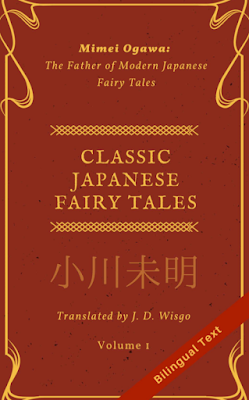"Chagall" by Raymond Cogniat (published 1985)
My personal interest springs from that middle panel: a wand, held up between what looks like the sun and moon, a floating book, the cityscape below in all its pretty treachery, the purple bird, a bit of green, a table. Elegantly simple in subject matter, at least seemingly, those windows can be looked at for quite some time. They penetrate into the viewer, engulf them in its blue, making the city feel more whole and less fragmented. As Cogniat writes of Chagall's stained glass:
"...in his stained glass the wall itself vanishes and the whole interior is filled with radiance, as though the spectator is himself a part of this source of intense, multi-colored light." (p. 86)
Cogniat, attuned to the criticisms Chagall's artistry had faced and might still, is sensitive to words such as "untrained", "simple", and "popular"to describe the artist's work. Rather, Cogniat speaks about Chagall's refusal to deny his upbringing and childhood in his creations: a Jewish childhood, for one, and two, an upbringing that took place in Russia as well as in France and then later, America.
Themes of the supposedly simple, and most definitely mythological, magical, and enchanted are found as recurring throughout his oeuvre, hand in hand with other subjects or rites including marriage, birth, death, love, music, and religion. Peasant and folk images abound in color and texture. His depiction of animals, food, music, celebration and dance are noticeable throughout his life's work as well.
The free-flowing, spontaneous quality to Chagall is what Cogniat interprets as being a genuine happiness he brings to the canvas by using colors in their full capacity and by his depiction of disproportionate images: people and beasts loom large over an entire backdrop, a tiny man is juxtaposed with a massive red-winged bird, houses are much too small to hold the people that walk towards them. I know nothing of Art History, yet I notice that Cogniat's art is childlike, as if he never lost his beginner's mind and instead honed into a talent he held as a child and kept that talent pure, away from technicality and skillful expertise. Instead, it seems, Chagall was determined to keep his hand's animate imagination alive, shifting his perspective only to perfect what was already present as his own gift. It also seems to me that Chagall's work was really for himself, he took joy in it for himself and not really for anyone else, thus making his pieces "happy", as Cogniat makes clear.
But despite all this happiness of color and shape (linked to Cubism but not quite reaching that style on purpose) there is a darkness that looms over these paintings. In "The Firebird", my new favorite, a white angel flies over an abstract pretty gloom, her head rests on her neck upside down, a bird's head emerges from behind her with no known source for its presence. The angel maiden holds a red bouquet in her hand. At the bottom left, a lizard. The bottom right, a small town being watched over by a male angel who might be playing a stringed instrument: https://arthive.com/marcchagall/works...
I should probably see Stravinsky's Ballet.
But even in other works of his, there is a woman, smiling with a fan, some outlined stranger behind her. Or a woman holding fruit, while a guitarist coyly watches her from behind. There is a dark mystery to his work. It makes sense to me, as it does to Cogniat, that he was commissioned to produce costumes for plays, sculpt pottery, and paint works and create stained glass for synagogues and churches. The element of mystery is not always without its religious aspect and never without an aspect of theatricality.
I've gained a new, deeper appreciation of this artist by reading this book. You do not have to be an art student, curator, or art historian to read it. I come away with this: I find Chagall's work moving and illustrative of child-like wonder, but I ask where this sense of foreboding deep in my gut is coming from. His work is happy, yes, but there is an element of looming, a looming risk or threat perhaps, that makes Chagall disturbing. What is the threat? What is the risk? In a word, I come away with curiosity, which is never a bad response, in my view.




Comments
Post a Comment